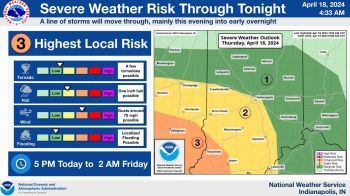(CNN) — On December 14, 2020, nurse Sandra Lindsay rolled up her left sleeve at a New York City hospital and became one of the first people in the US to get vaccinated against Covid-19.
The vaccine was from Pfizer/BioNTech, and it had been authorized for emergency use only three days earlier by the FDA — the first counterblow against a deadly virus that had crippled the country and shut down much of the world. Authorization for Covid-19 vaccines from Moderna and Johnson & Johnson soon followed.
A year later, millions of people in the US — and billions around the world — have been vaccinated against the coronavirus. The pandemic is still with us. But the vaccines have saved countless lives, reduced hospitalizations and helped restore some normalcy to our social activities.
They also have been greeted with skepticism and fear by many people who refuse to get them. Vaccine mandates have sparked protests, pitted companies against employees and complicated international travel.
And vaccine doses have disproportionately gone to wealthier countries, leaving poorer ones less protected.
As we mark one year of these vaccines, the world is fighting pandemic fatigue and the threats of new variants. But hundreds of thousands of people still are getting vaccinated each day in the US.
Here’s a look at Covid-19 vaccines, by the numbers:
At least 485 million
The number of coronavirus vaccine doses administered so far in the United States.
Nearly 60% of doses administered have been Pfizer/BioNTech, while another 38% have been the Moderna vaccine. Less than 4% of doses administered have been from J&J.
At least 202 million
The number of people of all ages who are fully vaccinated in the US — about 60.9% of the total population — according to figures this week from the US Centers for Disease Control and Prevention.
Vaccination coverage in the US increases by age group. More than 87% of seniors are fully vaccinated, compared to less than 60% of adults under the age of 25 and about half of adolescents age 12 to 17.
Racial disparities in vaccination persist, but the gaps are not as wide as they were in the early months.
23.4%
The percentage of eligible people in the US, including all adults and children ages 5 and over, who have not received a dose of the Covid-19 vaccine, according to CDC data. That’s roughly 73 million people. The CDC notes that first doses may be overestimated in their data, as records don’t always include enough information to determine whether a shot was administered as a first dose, second dose or booster.
Vaccination uptake varies widely state to state. More than three-quarters of people in Vermont are fully vaccinated, for example, but there are still six states where less than half of residents are fully vaccinated, according to CDC data: Alabama, Georgia, Idaho, Louisiana, Mississippi and Wyoming.
2 million
The average number of doses being administered each day in the US.
For the first month of the vaccination campaign in the United States, an average of less than 1 million doses were being administered each day. That jumped to a peak of about 3.4 million doses per day in mid-April once eligibility expanded to all adults.
The pace of vaccinations dropped dramatically over the summer, but is ticking up again, with booster shots accounting for more than half of the doses administered each day.
The daily pace of boosters has risen quickly in recent weeks since the Omicron variant was identified.
16.7%
The percentage of children ages 5 to 11 in the US who’ve received at least one dose of a coronavirus vaccine, according to a report this month by the Kaiser Family Foundation.
“After a short period of high demand, the rate of new vaccinations slowed significantly leading into the Thanksgiving holiday, and has continued at the slower pace since,” the report says.
CDC data put that figure closer to 19%, but the agency notes that first doses may be overestimated. About 10% of kids in this age group are fully vaccinated, according to the CDC.
About 3 in 10
The share of parents who have concerns about the safety of Covid-19 vaccines for children and say they will “definitely not” vaccinate their kids, according a survey in November by the Kaiser Family Foundation.
In recent months the rate of vaccinations has slowed among adolescents ages 12 to 17, the KFF said.
35%
The percentage of pregnant women in the US who have received the vaccine, according to the CDC.
“People who are pregnant or were recently pregnant are at increased risk for severe illness from Covid-19, including ICU admission, ventilator use and death,” the CDC says.
The risk of hospitalizations for pregnant people has skyrocketed since the Delta variant became predominant.
8.5 billion
The number of vaccines administered around the world so far.
But despite international efforts, vaccine inequity remains a concern. The World Health Organization has pushed for equal access to vaccines among rich and poor countries, but wealthier countries still have a much higher vaccination rate.
“The vast majority have been administered in high- and upper-middle-income countries,” the World Health Organization says. “If these doses had been distributed equitably, they would have been enough to cover all health workers and older people globally.”
47%
The share of the world’s population that is fully vaccinated against Covid-19, according to Our World in Data, an online publication by a team of researchers at the University of Oxford. High-income countries have administered more than twice as many vaccine doses per capita than low-income countries.
At least 65%
The percentage of people at least partially vaccinated in high-income countries such as France, Japan and United States, according to the United Nations. That works out to roughly two in three people in those countries.
At least 8.35%
The percentage of people at least partially vaccinated in low-income countries such as Afghanistan, Ethiopia and Sudan, according to the UN. That’s about one in 12 people.
Nearly 800,000
The number of coronavirus deaths reported in the United States.
5.3 million
The number of coronavirus deaths reported worldwide.













